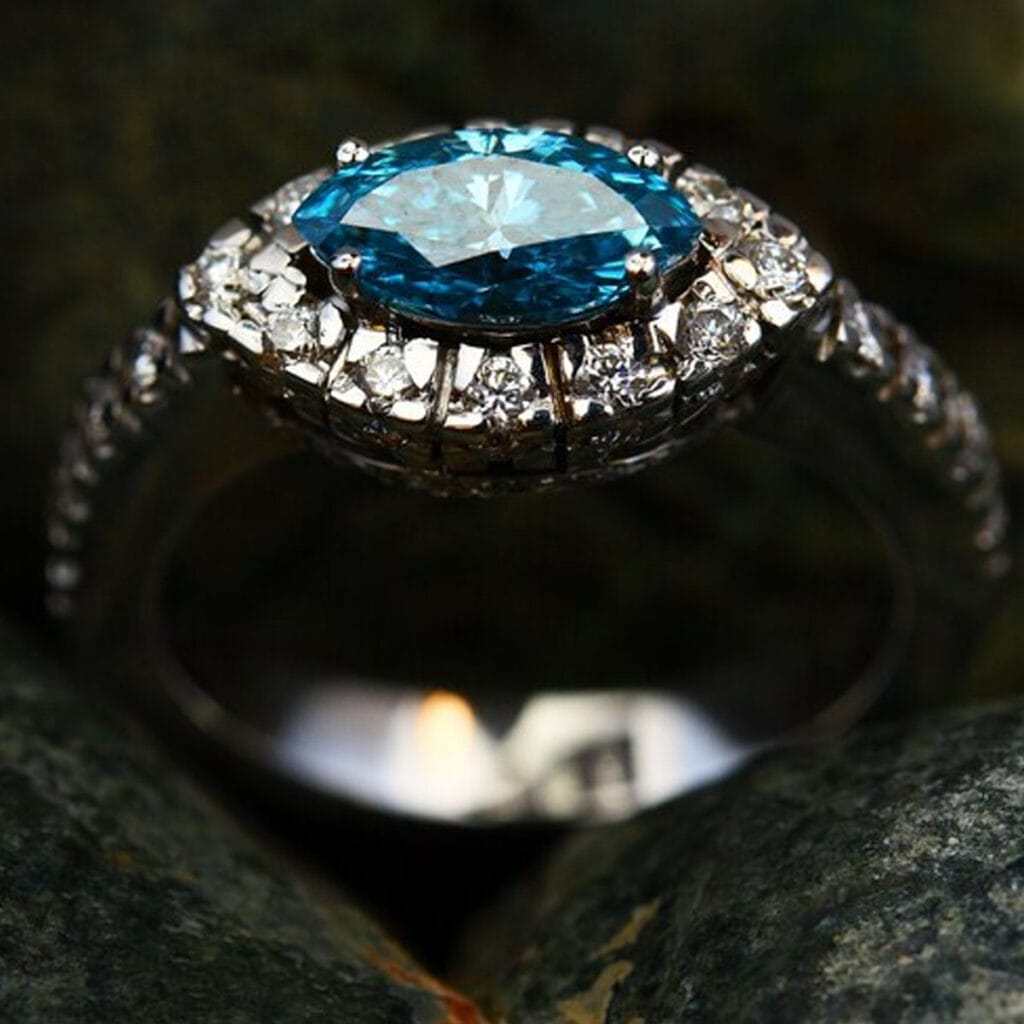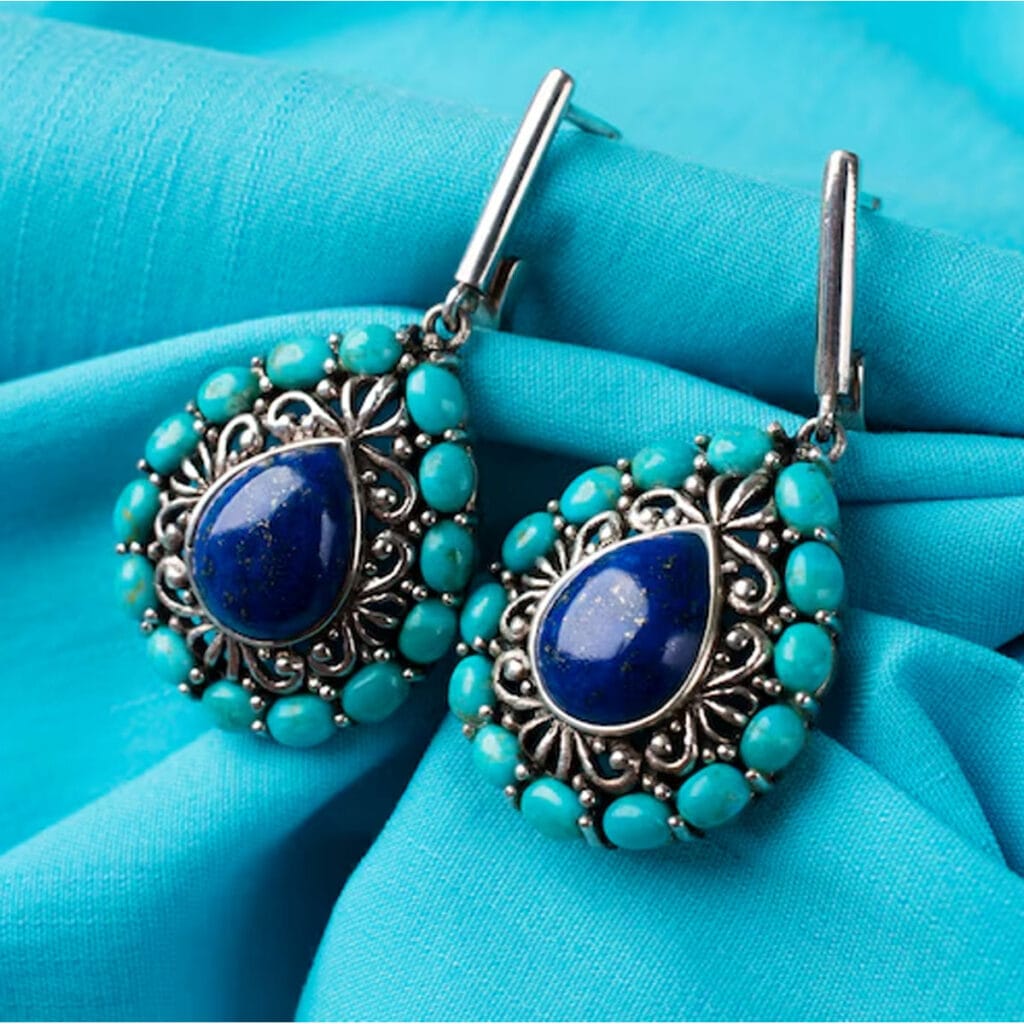The first time you see blue gold, you pause. The metal carries a shade that belongs to dawn clouds or the depth of the Atlantic, yet it glints with the unmistakable sheen of treasure. In an age when consumers can scroll through endless scrolls of yellow, white or rose pieces, this startling tone feels like a revelation. Buyers hunt for colour that speaks of personality rather than status, and designers are searching for metals that let them paint rather than merely set. Blue gold answers both calls, yet it does so with intrigue. It is rare, technically demanding and wrapped in stories of laboratory experiments rather than courtly tradition. That tension between scientific progress and human emotion makes the subject irresistible.
Defining Blue Gold in Modern Metallurgy
Ask a metallurgist what blue gold is, and the reply will be measured. There is no single alloy. Instead there are families created by different routes, all aiming for that distinctive cool tone:
- Intermetallic blue gold
- Surface-oxidised alloys
- Coated or plated finishes
Each route changes the rules of strength, purity and maintenance. Intermetallics, formed from rigid crystal lattices, hold colour within every atom yet behave like porcelain under stress. Oxidised alloys keep a classic ductile heart but rely on a thin blue skin. Coated gold lets a jeweller use any conventional alloy beneath a decorative layer that will eventually wear. Knowing which route a piece follows is the difference between heirloom and heartbreak.
The Three Faces of Blue Gold
Intermetallic compounds rule the purist’s conversation. The celebrated gold-indium alloy (AuIn₂) contains roughly 46 per cent gold, placing it just inside the UK hallmark for nine carat. Light strikes its orderly lattice and returns a steel-meets-sky hue that deepens in overcast daylight. Drop it, though, and the shard count rivals shattered glass. Its cousin, gold-gallium, creeps up to fourteen carat purity and carries a violet whisper, yet it is even more brittle.
Surface-treated alloys offer a different compromise. An eighteen-carat blend of gold and iron, heated between 450 °C and 600 °C, grows an iron-oxide patina sometimes described as ice blue. Pushing the temperature and alloy development further, researchers have produced twenty-to-twenty-three-carat gold mixed with ruthenium and rhodium that colours to a rich sapphire when fired at 1,800 °C.
Finally, coated options rely on external technology. Electroplated rhodium plating in a navy bath gives deep, inky coverage ideal for statement earrings. Modern vacuum chambers feature a ceramic-like PVD coating that resists minor scratches for several years, a feature commonly found in luxury sports watches. Yet both remain skins, not substance.
Fun Fact: When Swiss engineers at VA Blue Gold SA unveiled a heat-treated twenty-three-carat blue alloy in 1988, the furnace cycle took almost ten hours and reached temperatures hot enough to melt traditional crucibles, forcing the team to invent new refractory linings on the spot.
A Spectrum of Colour and Light
The phrase coloured gold often conjures cartoonishly bright renders, but reality is richer. Under midday showroom LEDs, intermetallic AuIn₂ appears steely, even hesitant. Step outside and the overcast sky coaxes a clear maritime blue. The oxidised gold–iron patina sits paler, closer to frost on slate, while the high-karat ruthenium blend glows like a sapphire held to candlelight. Designers love how these tones complement lava-warm yellow gold, rosy copper alloys, or the neutral prestige of platinum. Each pairing writes its own chapter, from twilight contrasts to restrained monochrome.
The subtle nature of the hue is important because it resists the charge of gimmickry. A ring that flashes neon would date fast. A band that shifts from gunmetal to arctic blue, depending on the weather, feels grown-up, almost secretive. For many clients, that discretion is the appeal.
Position Among Contemporary Metals
Blue gold sits apart from platinum, white gold and silver, none of which impose colour upon stones. It also differs from black gold, whose ruthenium plating delivers striking shadows but sacrifices subtlety. Instead, Blue Gold offers an atmospheric middle ground. It introduces tone without shouting, allowing a sapphire to echo metal, or a diamond to throw cold fire against a stormy backdrop.


Sustainability and Ethical Considerations
Blue metals may feel futuristic, yet a focus on responsibility dominates the conversation in 2025 jewellery circles. Recycled bullion now powers many independent workshops, sharply reducing the carbon cost of mining. Studies of consumer behaviour show sustained growth in demand for sustainable jewellery, with brands that re-refine precious scrap gaining market share over newly mined metal.
For lovers of blue gold, the message is clear. Intermetallic alloys can and should be created from recycled fine gold, while indium or gallium additions require careful sourcing from electronics recycling streams. Responsible ateliers already publish the provenance of every crucible charge, and clients are beginning to ask for written origin reports alongside assay certificates. Matching the rarity of blue gold to a low-impact story strengthens its value narrative and aligns with the wider trend towards ethical adornment.
Blue Gold in Horology and High Tech
Watch engineers prize surfaces that resist abrasion while adding character. Vacuum-deposited PVD coating delivers precisely that: a ceramic-hard shell measured in microns that can tint a steel or gold case without altering tolerances. In premium sports watches, a midnight blue finish is now marketed as a nod to deep-sea exploration, with marketing departments quietly crediting blue gold research for the inspiration. Real-world tests suggest coatings retain appearance for at least three years of daily wear if owners avoid grit and pool chemicals.
Dial makers have also revisited surface-oxidised gold–iron alloys. The patina offers a cool alternative to classic sun-burst brass, giving limited-edition chronographs a palette that pairs elegantly with silver registers and white luminous paint. Because a dial lives behind a sapphire crystal, it escapes knocks that threaten rings, letting blue gold remain pristine for decades.
Market Outlook to 2026
Analysts tracking alternative coloured metals point to a niche yet solid growth curve. Sales of design-led pieces containing rare alloys rose by an estimated eight per cent in 2024, outpacing mainstream yellow lines. Collectors view blue gold in the same bracket as meteorite inlays or sculptural titanium: low volume, high narrative value, and strong resale among connoisseurs. With trend forecasters predicting bigger silhouettes and architectural shapes for 2025 jewellery, the muted luminosity of blue tones provides contrast without overpowering gemstones.
Insurers already treat intermetallic blue gold like a fragile gemstone. Premiums reflect the cost of re-manufacture rather than bullion weight, reinforcing its status as functional art. Investors expecting rapid appreciation should temper expectations, yet curated collections have held value well, thanks to limited supply and sustained media interest in laboratory metallurgy.
Care, Restoration and Insurance
Routine maintenance is a pact between the owner and the maker. For a surface-oxidised wedding band, jewellers recommend re-bluing every eighteen to twenty-four months, a service that costs less than a full rhodium plating on white gold. PVD finishes last longer but benefit from annual ultrasonic cleaning to remove sweat films that can dull the colour. Replacement coatings are possible, yet the depth of the original hue depends on the thickness, so refinishers should match the first spec precisely.
Owners of intermetallic inlays should schedule inspections every six months. Any edge chipping can be stabilised with micro-bezel additions, preserving the original colour block. Specialist insurers now bundle inspection reminders with digital policies, ensuring that treasured pieces do not go unchecked at the bottom of a jewellery box.
Final Reflection
Blue gold began as an experiment, a meeting of metallurgists, oxygen, and curiosity. Today it stands as a quiet rebellion against predictability, proof that a noble metal still has mysteries to reveal. Choosing it means choosing stewardship as much as sparkle. Treat it thoughtfully and its oceanic tone will accompany a lifetime of milestones, echoing softly like waves against a harbour wall. After all, good things come to those who wait.

